|
|
I'll be out of range for a while, only back and posting after the 9th or 10th of July. BLDGBLOG, in other words, is off to Paris... Till then, here's an updated Table of Contents of the site; if you're either new to BLDGBLOG or have simply forgotten this site's previous half-lives: now's your chance to click around. So I'll be back. And the Parisian visit is relatively tightly scheduled (it's work-based), but if you have any tips, let me know!  Wherever you go, bring your own subway entrance! Should we use cloned meat to pave interstate highways? Or build whole cathedrals out of organ transplants? The hidden valve chambers and underground hydro-works of New York City, photographed by Stanley Greenberg! More Manhattan tunnels, blasted straight through schisty bedrock! Slum warfare, William Gibson, Ridley Scott, geopolitical "holes" and ecological footprints – it's an interview with Mike Davis! And here's part two! A flying micronation made entirely of solar-powered helicopters! Hurling Taj Mahals into the sky! The lost city of Z! Albinos, lost maps, dead Brits and miles and miles of unexplored jungle! Where will Niagara Falls be in a million years? And will London be more than a mile beneath the surface of the earth, buried in muck? Living amidst highway flyovers – or, in this case, directly on them! Why is today's architectural criticism so boring? A group of 38 Ukrainian Jews escaped the Holocaust by living inside a cave system for several years! 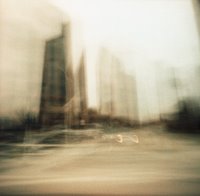 Huge cubes of carbonic glass Huge cubes of carbonic glass have taken over the world's landscape! Architectural conjecture meets Parisian sci-fi noir! Houses that aren't houses at all – they're disguised electrical substations! Supercomputers, rivaling God, housed in deconsecrated chapels! Offshoring labor, literally – using a permanently anchored tax haven off the coast of Los Angeles! Or this ship, moored for so long it becomes architecture! A Shopper's Guide to Urban Catastrophe! And we didn't forget you, vegans! Bored? Why not read this travel guide to an island that doesn't exist? A Mexican library made from reused airplane hulls! The gleaming, inhuman garages of Branislav Kropilak! Flying hotel rooms! In silver shiny blimps! Robo-Qibla™ meets the Gyro-Mosque® – in deep space! 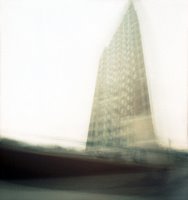 Can we melt down London and use it as ink to print new cities? Blueprints for rebuilding America's National Parks – arch by bolt by nail! Tour the San Francisco Bay Hydrological Model! The icebergs of war! The planet, re-mapped according to airplane passengers and tractor imports! Deliberately manufacturing storms in your garden! The abandoned Ballardian world of WWII bunker archaeology! Mind-blowing tectonic maps of ancient North America as the continent slowly takes its present form! Tatlin's Tower!A musical machine made entirely from windows! It's " a static, mineral accumulation of all the movements that had constituted their blind existence"! 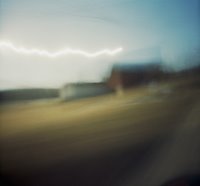 London, mapped by the emotions of its inhabitants! Cinematic urbanism! Are the skyscrapers of Shanghai generating dangerous weather? Spend the night in an eclipse camp! Unbelievable photographs of the perfect vortex! Labyrinthine plaster casts of ants' nests! Films of those ants leaving phero-chemical trails! A huge, inflatable sphere that turns earthquakes into music! More tectonic surround-sound! What strange and secret cities exist beneath Tokyo? Origami! A fossil reef stretches from Portugal to Moscow – some say further – but what if the whole thing was eroded by weather over millions of years... to become a huge wind instrument embedded in the rocks of Europe? 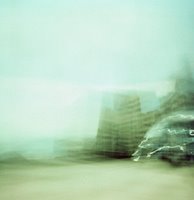 Dismantling Gothic cathedrals arch by arch, on the beaches of equatorial archipelagos! The world's largest diamond mine! Rollerskating alone at night through subterranean knots! A seed vault to avert planetary apocalypse! Listening to the arched foundations of London instrument! A man exactly reproduces his old apartment using colorful nylon sheets! Weird geometries in the Kansas farmscape! Slow landscapes of silt and the J.G. Ballard who loves them! The lost gods of Europe hurl spheres at each other in space! Valves, drains, and tunnels in the self-connected topology of underground London! Entire cities snowing diamonds from Baroque domes!  Is that architecture or just a soundtrack hovering in space? Helicopter photographs in the sububs of self-similarity! The 7 New Wonders of the World! Southeast London transformed into a maze of rooftop gardens! A temporary public park – complete with bench and parking meter! Lunar electricity! Possibly the longest building on Earth – or at least in Illinois! BLDGBLOG Presents: the Mars rover film! But bring some Kleenex! The poet Shelley sets sail for a volcanic archipelago made entirely of glass! A London superstadium full of ring magnets will capture the Northern Lights! Beautiful maps! 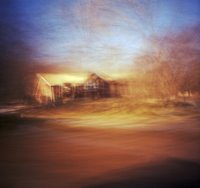 The churches of Christopher Wren, transformed into a geomagnetic harddrive! The World Trade Center was actually a gigantic tuning fork! Jurassic park, Russian conservation style! James Bond thwarts a San Franciscan attempt at tectonic warfare! Slum dwellers and modular parasites of the urban world, unite! An abandoned island off the coast of Japan! Unearthly landscapes swarming with alien bacteria! The suburbs: raw mounds and earthworks, before construction arrives! Extraterrestrial life rained down on India! The internal volume of Notre-Dame, Paris, carved into the surface of the moon! Meat! 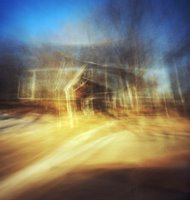 The landscape architecture of Hell, its subsurface faults and magmatic geology! Why not live inside your garage? Is that a suburb growing out of your spine, or are you happy to see me? 3000km of concrete tunnels installed beneath the deserts of Libya! The robotic, neverending cinema of Los Angeles traffic control! Plus the real-time participatory surveillance of LA's freeway system! A house of landslides, filled with geese! Hypnotic films of motorway orbitals now available on DVD! Surreal nighttime photography of Japan! Measuring astronomy – solstice and stars – with a city modeled on Stonehenge! Unbelievable maps and diagrams of interstellar astral incidence!  Then we hiked alone for a thousand years, and we renamed all the constellations! The averaged images of suburban ennui! Food! Cake! Have you seen this hull before? New Arctic seaways promise Lovecraftian visions to come! On the colors of dismantled landscapes, photographed from the air! Lego spaceships! The radio sounds of the earth's magnetosphere! The meditative drone of urban security gates! Famous architecture, blurred! Photographs of Chernobyl, including an abandoned alphabet! Morocco double-exposures!  The Earth in 7.5 billion years! Fossilized cities! The art of reforesting continents through tree bombs! The deserts of the world are musical instruments! Venice resonates with voices! Huge and amazing maps of California hydrology! The city as an avatar of itself! The wonderfully weird, self-observing urban world of CCTV! Sci-fi instant cities built above working limeworks pits! The abandoned malls of Chicagoland! WWII British sound mirrors used to musicalize mountain storms! 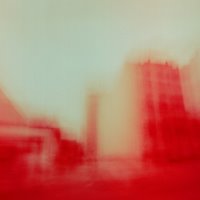 All hell is breaking loose in middle America! San Jellocisco! Catching near-earth asteroids using a gigantic baseball mit! If you've got nothing else to do, why not go camping in an abandoned mine? Inbred, zombified ex-idealists stumble through pressurized undersea utopias, listening to Mozart! Biking through glass tunnels suspended above metropolitan Toronto! An inflatable hotel – in deep space! Folk maps of Brooklyn's Gowanus Canal! Cool bridges! Houses, churches, places to hang: it's the afterlife of the Quonset hut! A man jumps from a balloon, free-falls 20 kilometers through the stratosphere, and captures the whole thing on film!  King Kong King Kong! Complicated volcanic pipe networks will extrude cathedrals directly from the earth! Huge, interconnected white towers in the middle of Beijing! A book of the Bible, reproduced as a textual landscape! Should Mars have its own landscape pictorial tradition? Is this it? Arches National Park, Manhattan branch! Will the International Space Station soon be turned into a sculpture gallery? An Indonesian mine and the technicolor stalactites it will form in a million years! In a wilderness of mirrors we lost our own reflections! Recording the secret music of bridges! Amazing tree houses by Andrew Maynard!  [Note: All photographs in this post (so not the first or last image) were graciously supplied by the hugely talented and exhibition-deserving photographer Nicolai Grossman, whose blog, Photon Detector, is well worth a read, and whose Spacetime Set on Flickr is the source for all these photos. Thanks, Nicolai!]
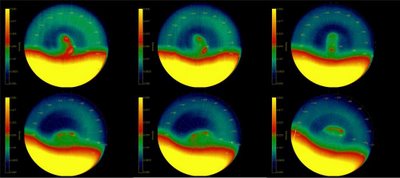 [Image: A " bizarre double vortex whirls in the atmosphere above Venus's south pole." Courtesy New Scientist SPACE]. There are roughly one million things I want to post about here – but, due to circumstances beyond my control, I'm way too busy to put up anything new. So, in lieu of a real post, yet saving you from another day of staring at Obliteration A.D., here's a grab-bag of BLDGBLOGian things for your intellectual self-pleasure. First, don't miss Inhabitat's newly-launched weekly look at Green Building 101. This week's installment: rethinking location in an era when daily commuting has reduced Americans' reported number of close friends. For the dark side of eco-urbanism, however, check out this near-catastrophic look at how gangs and serial killers from Los Angeles with no experience of "nature" have turned the nearby National Forest into a kind of murder-plagued wasteland full of corpses. (Thanks, Neddal!) Elsewhere, if you're near Long Island City, stop by Opolis, a "giant-scale miniature city in 13 blocks by 15 artists" (including Leah Beeferman), open through August. Discover the landscape acoustics of Mars. This device " records smells to play back later," so perhaps we can make the streets of Paris... smell like Barcelona. Or like oatmeal, for that matter. And if you, too, are addicted to the World Cup, racing to the TV every mid-afternoon to watch ESPN, then here's an ingenious look at football, John Cage, choreography diagrams, and the labyrinth of steps taken by Argentinian strikers. Meanwhile, The Economist reimagines the Eiffel Tower as a minaret –  – in their recent look at Islam in the cities of Europe; will we someday see a new continent called Eurabia? Finally, read architect Eyal Weizman's take on what could be called the military topologics of urban warfare: according to Weizman, for instance, recent incursions by Israeli soldiers have "used none of the streets, roads, alleys, or courtyards that constitute the syntax of the city, and none of the external doors, internal stairwells, and windows that constitute the order of buildings, but rather moved horizontally through party walls, and vertically through holes blasted in ceilings and floors. This form of movement, described by the military as 'infestation,' sought to redefine inside as outside, and domestic interiors as thoroughfares. Rather than submit to the authority of conventional spatial boundaries and logic, movement became constitutive of space. The three-dimensional progression through walls, ceilings, and floors across the urban balk reinterpreted, short-circuited, and recomposed both architectural and urban syntax." (More to be found in this 4.3MB PDF – thanks, Bryan!). I'll put up one more post tonight or tomorrow before BLDGBLOG heads off... to Paris. More soon. I hope. PS: It is apparently safe to dump chemical weapons into landfills.
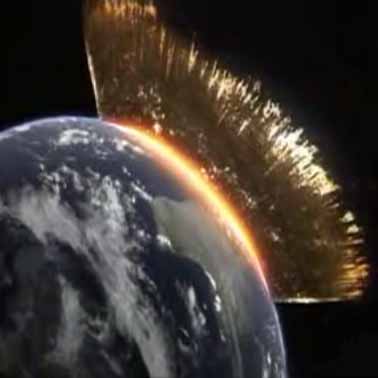 [Image: A film-still taken from this look at the Earth's complete destruction – the whole planet, shattered – after it's been hit by a 100km-wide asteroid. Boiling tidal waves of impact magma! Hot stuff – via New Scientist. Note: the film is in Japanese].
 Implant Matrix Implant Matrix, we read, is "an interactive geotextile that could be used for reinforcing landscapes and buildings of the future." It is a responsive latticework that, installed beneath soil, would act as a kind of a terrestrial prosthesis, a local replacement for the earth's surface. An earth surface machine.  The Implant can also be used, however, as a way to treat "an architectural building skin as a responsive textile," facilitating "active exchanges with building occupants." In the process, the machine would exhibit "mechanical empathy."   Which means what, exactly? "Mechanical empathy" is described by the project's designers – Philip Beesley Architect of Toronto – as a kind of architectural eroticism. So if you're lonely... reach out and touch your house: "The components of this system are mechanisms that react to human occupants as erotic prey. The elements respond with subtle grasping and sucking motions. Arrays of ‘whisker’ capacitance sensors and shape-memory alloy actuators are used to achieve sensitive reflexive functions. The interactive elements operate in chained, rolling swells, producing a billowing motion. This motion creates a diffuse peristaltic pumping that pulls air and organic matter through the occupied space."  The assembly, in other words, with its micro-mechanical nerve endings, seems to mimic orgasm... Perhaps giving new meaning to earthquakes. (Read more in this PDF). Two more, decidely cinematic, views of the Implant Matrix:   Of course, there is a bewildering array of other such projects by Philip Beesley Architect featured on their website, including Cybele, a kind of rubberized terrain-machine on stilts –   – which, seen from above in this next image, offers its own miniature landscape, another earth surface machine.  Then there's the hypnotically delicate Orpheus Filter, with its shivering infrastructure of virus-like bladders arranged in hanging constellations and blurred carousels (below).     But you can also see many, many more interactive machine-sculptures – like the William Burroughsian Orgone Reef, the amazing Hiving Quilt, or even the Reflexive Membrane, which looks like some sort of artificially intelligent alien surgical device – over at Philip Beesley Architect's online gallery. Then you should hire them to design something for you. (Abstractly related: Strandbeestmovie. With huge thanks to Eric Bury for the tip! And... I just saw that Tropolism also featured the Implant Matrix, so check out their coverage for a bit more).
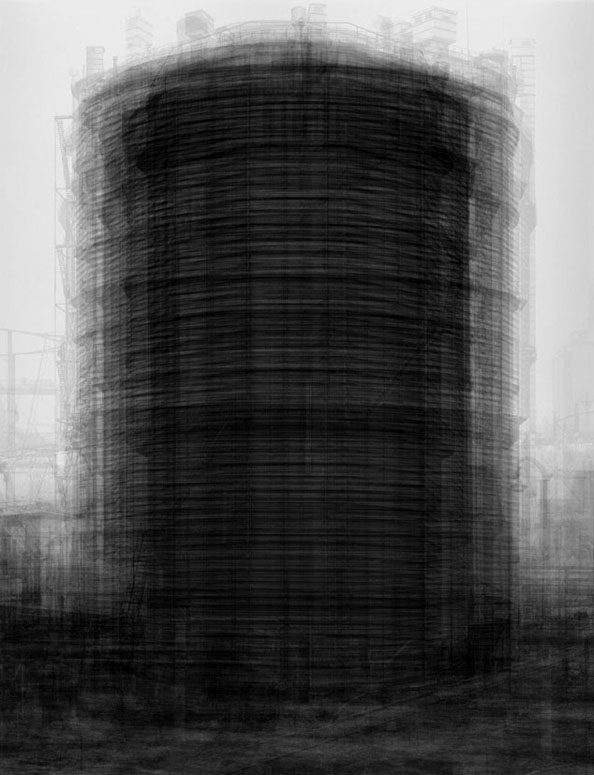 [Image: What is it? To find out, you'll have to visit gravestmor].
Penny Boston – a professor at New Mexico Tech who once spent two weeks "in a self-contained 24-foot-diameter capsule in the Utah desert to simulate working conditions on Mars" – has also discovered a cave tunnel that buzzes.
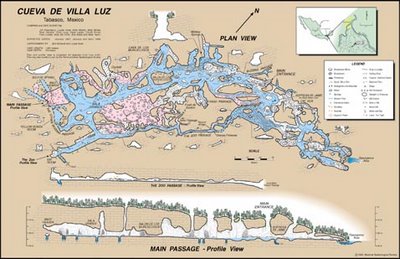 [Image: The Cueva de Villa Luz, Mexico, with its buzzing tunnel; see also this PDF for more information, or this site for more images]. [Image: The Cueva de Villa Luz, Mexico, with its buzzing tunnel; see also this PDF for more information, or this site for more images].
"Drops of sulfuric acid from the ceiling sting my neck and back as I crawl," Boston explains in an old issue of Wired. "I can hear something far down the narrow tunnel," she writes, "a buzzing like a million tiny voices. My team members and I don't know what it is. We've tried to find out, but each time something forces us to turn back: a spike in carbon monoxide, a breathing-mask failure, a choking blast of ammonia. Now I'm trying again. But the passage is narrowing."
The buzzing tunnel there in front of her is the Cueva de Villa Luz system, in Mexico. These deep, chemically exotic subterranean environments, Boston believes, are excellent examples of the landscapes that might host life beyond Earth – on Mars, for example.
In fact, Boston continues, "since first suggesting that the underworld was a good Mars analog in 1992, my team has studied caves filled with microorganisms that eat bedrock and produce unique minerals, and we've found beautiful crystal formations that are products of ancient subterranean life. I've dived into hot acid waters, rappelled into deep pristine caves where no humans have gone before. In these worlds under the water, we are the aliens, barely able to cope, while the natives happily flourish." These "natives" are called extremophiles: micro-organisms capable of surviving almost literally infernal conditions.
They're not cute little animals, however; these organisms are often described as a kind of sticky cave-snot – thick sheets of living mucus.
Boston: "The debate about whether there actually is life anywhere else in our solar system has raged for the past century. We just don't know – but someday we'll go find out. We'll face many of the same dangers and challenges we do while exploring the subsurface of our own planet." In the meantime, she adds, "the caves of the solar system await us." Such as the caves of Mars.
And yet, fascinatingly, Boston and her research team "still don't know" why that tunnel, deep in Mexico, was buzzing...
[Note: At least one other landscape in Mexico has U.S. scientists convinced they've found biological analogs for alien life; you can read about the marshes of Cuatro Ciénegas here on BLDGBLOG. Meanwhile, Penny Boston has some interesting ideas for how to terraform Mars – how to prepare it for supporting life – and this includes cultivating huge ponds of duckweed].
Mobile execution chambers are now on the road in China. As a replacement for the firing squad, this is nomadic power, bringing the state – and lethal injections – to your doorstep.  "Makers of death vans," USA Today reports, "say they save money for poor localities that would otherwise have to pay to construct execution facilities in prisons or court buildings. The vans ensure that prisoners sentenced to death can be executed locally, closer to communities where they broke the law." It's the infrastructure of punishment detached from the limitations of geography. On the other hand, "China's critics contend that the transition from firing squads to injections in death vans facilitates an illegal trade in prisoners' organs. Injections leave the whole body intact and require participation of doctors. Organs can 'be extracted in a speedier and more effective way than if the prisoner is shot,' says Mark Allison, East Asia researcher at Amnesty International in Hong Kong. 'We have gathered strong evidence suggesting the involvement of (Chinese) police, courts and hospitals in the organ trade.'" To guarantee that each execution is "carried out legally," they are all "recorded on video and audio that is played live to local law enforcement authorities" – state-induced death as a form of avant-garde cinema. As USA Today continues, punishment by death is not uncommon: "Sixty-eight different crimes – more than half non-violent offenses such as tax evasion and drug smuggling – are punishable by death in China. That means the death vans are likely to keep rolling." Perhaps leading to someone's future Ph.D.: Urban Design and the Death Sentence. Or a TV show: Pimp My Death Van.
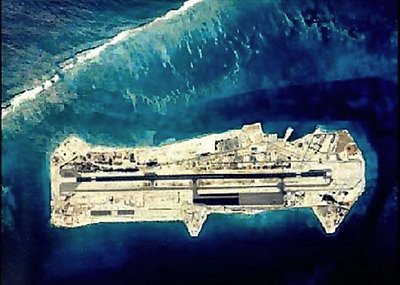 Johnston Atoll, which consists of " four small man-made islands enclosed in an egg-shaped reef approximately 21 miles in circumference," located 718 miles from Hawaii, is for sale. The current owner, however – the wonderfully named U.S. Office of Property Disposal – wonders if potential buyers might be "unaware that all buildings had been removed" from the island, and that "there were no functioning utilities or water supply, the runway was iffy, the golf course disintegrated, the seawall containing the nuclear waste dump was insufficient, and that nearest services of any kind are over 700 miles away."  If you purchase the island despite all that, your land deed "will contain use restrictions because the atoll was used by the Defense Department for storage of chemical munitions and as a missile test site in the 1950's and 60's. The island can be used as a residence or vacation getaway" – but "the airstrip and the golf course are closed." Today, the Center for Land Use Interpretation tells us, Johnston Atoll is nothing but "a scab of concrete, slowly being covered in bird droppings."  Meanwhile, the atoll's history as a U.S. nuclear test-site is fascinating: "In 1962," CLUI continues, "Johnston was used for a series of nuclear tests as part of Operation Dominic, which included the only U.S. test of an operational ballistic missile with a live warhead. For this test a Polaris missile was launched from a submarine, and traveled 1200 miles through space and the atmosphere, until detonating 11,000 feet above the ocean near Johnston. Also that year, the newly constructed rocket launch pad at Johnston was used for a number of extremely high altitude nuclear tests. On June 20, during 'Starfish,' the Thor rocket engine cut out a minute after launch, and the missile was intentionally destroyed, at 30,000 feet. Large pieces of the rocket, including some plutonium–contaminated wreckage, rained down on the atoll." And so forth. If you buy the island, of course, let me know... (With images from CLUI – and with huge thanks to Mark, who recently tipped me on the island's existence. For more info, there is also this Wikipedia article. And if you're in the market for other strange real estate, consider purchasing this subterranean bunker-city). [Note: Apparently, Johnston Atoll was never for sale. The advertisement claiming otherwise was accidentally put onlin e and then picked up by search engines. Alas...]
 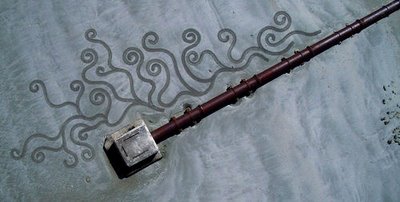 [Images: Sand raked into earthworks, then photographed from above with a kite – a process all but perfected by Lenny, a photographer based on the island of Guernsey, whose art and idea these are. Both photos taken from his Flickr set. The first photo, above, I find almost unbelievably gorgeous]. (Discovered via Xenmate, whose blog will also tell you about starling murmurations).
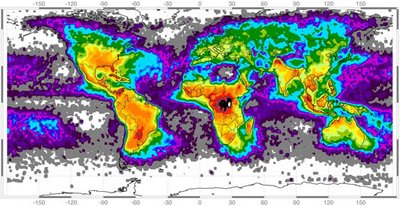 Geology.com Geology.com presents us with a very interesting map of global lightning strikes – high-resolution version available here. Central Africa is clearly the lightning hotspot of the world, and by a fairly stunning magnitude, I might add. (Black indicates the most active regions). 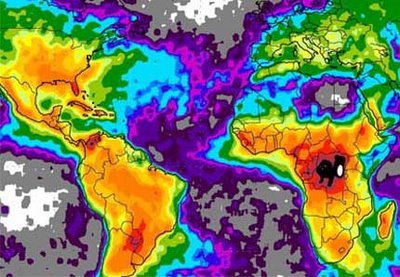 I wonder what you'd do, on the other hand, if your own brain showed up on this map... A moving black spot, crashing harddrives, frying satellites, starting fires in the deserts of sub-Saharan Africa. Or the canyons of Manhattan, funneling frictive clouds of geomagnetic energy down avenues, lighting up this map with darkness. For that matter, if, instead, spinning out in the middle of the Pacific you find a weird eye of unexpected hydro-electrical activity, dooming ships, hiding islands, setting up the storyline for King Kong 2... In any case, yet more information about lightning, etc., can be found at the Center for Lightning and Atmospheric Electricity Research.
 [Image: Via Pruned]. [Image: Via Pruned].
In 2002, Alex Pang of the Institute for the Future published a book called Empire and the Sun: Victorian Solar Eclipse Expeditions.
In the Victorian era, Pang explains, "British astronomers carried telescopes and spectroscopes to remote areas of India, the Great Plains of North America, and islands in the Caribbean and Pacific to watch the sun eclipsed by the moon." These journeys are referred to as "eclipse fieldwork."
 [Image: Stellar depression, or a total eclipse of the sun; from an astrophotography site]. [Image: Stellar depression, or a total eclipse of the sun; from an astrophotography site].
Victorian eclipse expeditions established "eclipse camps," or instant cities geographically calculated to lie exactly on the forthcoming path of totality. This was, we might say, urban planning as a function of astronomy; or, solar cycles dictating city form.
Observations here could be made of the temporarily extinguished sun, a black star shining over regions so remote they were often entirely unpopulated. On the other hand, Pang writes, locations close to railways were always preferred, as "a small town, easily accessible by railroad, with clear observing conditions and no clouds or dust," could forestall the inconvenience of camping in the middle of nowhere.
"The first step," of course, "was to find out the path of totality. By the nineteenth century, the mathematics required to divine the location of the 'shadow path' was well developed, and predictions to within a few hundred yards were possible, an excellent level of accuracy since the shadow path itself was more than a hundred miles wide."
It was here, within this slim zone of moving darkness, spheres of heaven casting shadows on the earth, that an eclipse camp could be established.
 [Image: A solar eclipse as seen from space; photographed by Mir]. [Image: A solar eclipse as seen from space; photographed by Mir].
Battling cobras, tigers, cholera, and sunstroke—"less fortunate parties" even faced "epidemics" and "small wars," perhaps suggesting Indiana Jones and the City of Eclipses—these expeditionary eclipse observers soon established a "standard form" for the camps.
Call it eclipse urbanism: cities built specifically to see, and photograph, the absence of solar light, producing highly accurate films of darkness.:
Every camp had shelter for instruments and baggage, and a darkroom for developing photographic plates. Observers setting up in monasteries [like monks contemplating a black sun, or the eclipse as solar adversary], villas, or estate gardens simply occupied existing buildings, while in unsettled areas, tents or huts were erected, and brick foundations and pedestals built. Eclipse stations were also easily identified by the temporary observatories that parties built. These buildings were usually rectangular, and built of wood on a brick or stone foundation; they housed the larger and more valuable telescopes, spectroscopic cameras, and darkroom, and appeared everywhere between Iowa City and Africa.
The architecture itself was hyper-specialized, designed to assist in recording the Apollonian withdrawal of the total eclipse: "The sensitivity and precision of astrophysical instruments created a demand for spaces that protected them from temperature variations, damp, vibration, and other distractions," Pang writes. "Consequently, heating systems were designed to stabilize ambient temperatures and minimize temperature gradients from one room to another, or between rooms and stairwells or closets. As telescopes became larger, vibrations from street traffic or motors became intolerable. Engineers responded by designing massive, vibration-free piers, often made of granite or stone, resting on foundations independent of the floors and other parts of the observatory."
Even "guards were posted" at the peripheries of these specially marked eclipse camps "to keep the curious from playing with instruments, disturbing the astronomers, or even carrying away mementos." Further, decorative individuation was practiced at each camp: "Bunting or flags were sometimes placed over a camp's entrance to emphasize its separate identity."
 [Image: A map of solar eclipses projected, amazingly, for 2981AD-3000AD; many, many more maps at NASA's World Atlas of Solar Eclipse Paths]. [Image: A map of solar eclipses projected, amazingly, for 2981AD-3000AD; many, many more maps at NASA's World Atlas of Solar Eclipse Paths].
As Mircea Eliade writes in The Sacred & The Profane—a survey of spatial practices in "religious myth, symbolism, and ritual"—"some parts of space are qualitatively different from others," and therefore need to be differentiated. Eliade calls these "sanctuaries that are 'doors of the gods' and hence places of passage between heaven and earth." Eliade—whose textual approach to world religions is outdated and translation-dependent but nonetheless totally fascinating—describes how re-organizing space for purposes that exceed the mundane, even becoming supernatural, should be considered a "cosmicization of unknown territories." This means the "establishment in a particular place" of a new form of human inhabitation, with a new purpose, holy or even astronomical in nature, thus re-establishing something called the "cosmic pillar." Eventually that place will be considered "the center of the world."
Etc. etc.
 [Image: A solar eclipse, from this MIT photo collection]. [Image: A solar eclipse, from this MIT photo collection].
In any case, at least two quick things interest me throughout all of this: 1) Are there any examples of eclipse camps that, once the eclipse was over and gone, did not disband, becoming, over time, fully functioning towns or cities? What marks, if any, did that astronomical origin leave in the urban fabric? 2) Given loads of money and a huge amount of land, could you build a railroad that extends for hundreds of miles down the center of a future eclipse path – even an eclipse that isn't due for decades, or perhaps hundreds of years? You ride from LA to Chicago, or Istanbul to Munich, Beijing to Bangkok, unaware that the skies will turn black along that very route, the train windows will darken, your passage across the earth will enact a moment of astronomy? It's a pilgrimage route for manic depressives, industrially sprawled across the planet.
 [Image: From the BBC. What unearthly flowers would grow by the light of a suicidal sun?]. [Image: From the BBC. What unearthly flowers would grow by the light of a suicidal sun?].
"A novel, glass-like form of carbon dioxide has been created in the laboratory by Italian scientists," New Scientist reports. "Under extreme pressures the researchers found that CO2 forms a crystalline solid, dubbed 'amorphous carbonia' (a-CO2)." This new material "could shed light on the way CO2 behaves under pressure inside planets." Instead of bedrock, for example, on these alien planets, you'd have miles and miles of transparent carbon dioxide glass spiraling downward beneath your feet, forming fissures and caves; a San Andreas fault of windowed canyons, shattering over millions of years. Glass continents. As Jules Verne once wrote: "Look down well! You must take a lesson in abysses." In this case, those abysses may well reflect you.  After being compressed under artificial, near-planetary pressures – or "400,000 to 500,000 atmospheres" – "CO2 molecules react to these conditions by forming an irregular crystalline, or amorphous, structure with oxygen molecules. The resulting material is transparent, tough, and has an atomic structure resembling that of ordinary window glass." Although amorphous carbonia "cannot [yet] exist outside of a pressure chamber," some scientists have already imagined using the material for "new, less environmentally harmful ways to dispose of CO2." This could mean, for example, creating huge transparent cubes of carbon dioxide glass; these would then store excess CO2, locking it into perfect Euclidean forms, instead of letting more gas escape into the atmosphere where it would trap solar heat. The more cars and factories are put into operation anywhere in the world, pumping out yet more carbon dioxide, the larger these cubes will get, growing, reflective, looming on the edge of the city. Peripheral, abstract geometries of the purest architectural avant-garde. Create enough and you could build whole cities with them. Or, airlifted into the desert and buried there, future caves of glass will soon form, eroding from the surface down, abraded by sand-heavy winds. Years later, you'll take walking tours of the Glass Caverns of Utah, staying in towns such as New Carbonia – even Carbonia an der Oder, or Carbonia-on-Thames – where everything is made from weird glass blocks, and windows look out upon a faceted abyss of crystalline landscapes, cubed mazes of self-generating reflections where future backpackers of the world will re-discover existentialism, writing abstract poetry in old notebooks before being driven mad. A confrontation with your double that never ends. Meanwhile, the skies have cleared of all excess carbon dioxide, and these cubes around the world continue to grow... 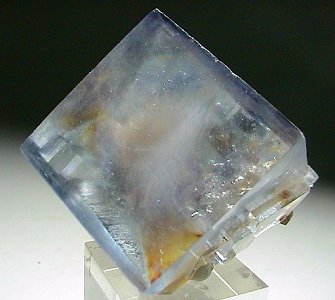 (With a nod, of course, to J.G. Ballard; of similar concern: BLDGBLOG's A Natural History of Mirrors).
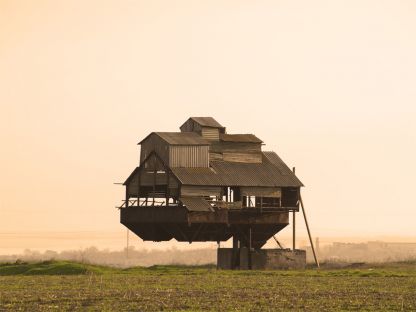 [Image: What is it? Who knows. Though, as Mervyn Peake describes the buildings of Gormenghast: "Standing immobile throughout the day, these vivid objects, with their fantastic shadows on the wall behind them shifting and elongating hour by hour with the sun's rotation, exuded a kind of darkness for all their color." Cantilevered structures self-supported over the void. Via Archinect].
"In 2003," Cabinet Magazine tells us, "Berlin-based sound artist Christina Kubisch began an ongoing project called 'Electrical Walks.'" For this project, Kubisch has employed "specially built headphones that receive electromagnetic signals from the environment," transforming those signals "into sound." In the process, "Kubisch maps a given territory, noting 'hot spots' (ATM machines, security systems, electronic cash registers, subway systems, etc.) where the signals are particularly strong or interesting." In other words, she performs a kind of audial psychogeography, zones of the city turned into MP3s, "very beautiful, very dense sounds... like a movie, an audio movie." The images, below, represent the sound files those sounds produced, digital noise-maps of urban space. 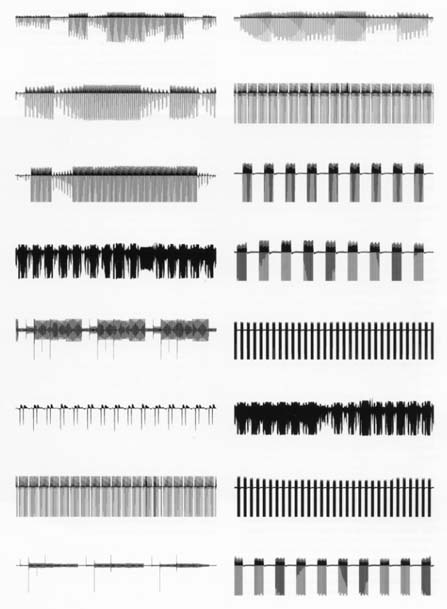 Whether you're listening to the mellow, down-tempo techno of this light advertisement from Japan, or the sci-fi drone of a Taiwanese subway (which Cabinet covertly, and somewhat fascistically, editorializes as a region of China) – or even the minimal, repetitive heartbeat of this security gate in Oxford, England, the mournful buzz of a Bratislava tram, which Kubisch describes as "almost like a choir," or the empty Ballardian hum of a control tower at Heathrow airport – these are the electromagnetic sounds of modern urbanism. "What I would really like to do," Kubisch says, "is to make a map of several cities and continents. In a large city, for example, where are the electromagnetic fields? Where are the security gates? You could just mark them with little dots. They even have the same sound systems all over the world. It's the globalization of sound. This is something that I think would be very interesting: to see a network of little dots showing where things are and where they are spreading. Every time I do an 'Electrical Walk,' it adds to this general map of sound that I'm collecting. It's artistic work, but it's a kind of social research, too." There are thirty tracks in all. Knock yourself out. (Related and elsewhere: we make money not art discusses Kubisch's project as well as " sound performances produced by people scanning their Oyster cards as they access London tube stations.")
|
|
































 [Image: The
[Image: The 









 [Image: A solar eclipse as seen from space; photographed by
[Image: A solar eclipse as seen from space; photographed by 









